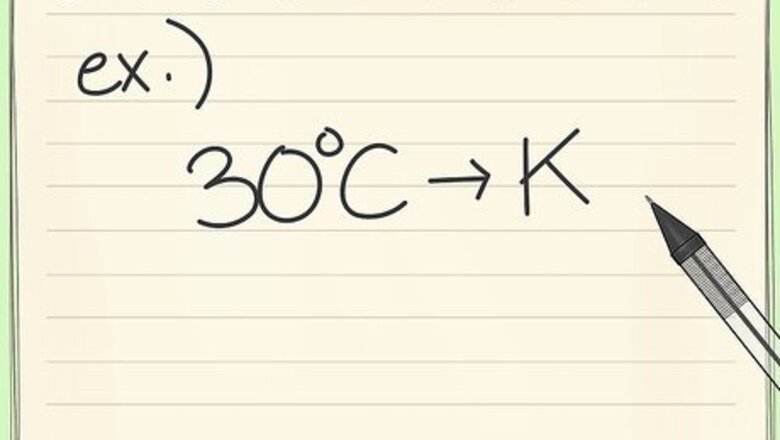
views
Convert Celsius to Kelvin
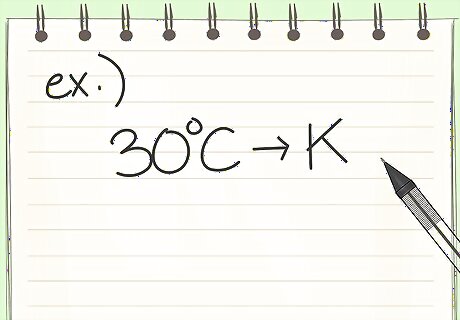
Write down the temperature in degrees Celsius. The conversion to Kelvin is remarkably easy-- all it takes is some simple addition. The following three examples will be used throughout the section: 30°C 0°C 100°C
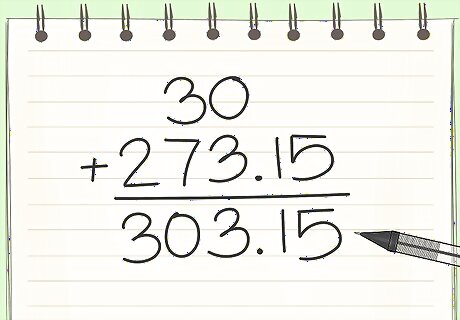
Add 273.15 to your Celsius temperature. For example, 30 plus 273.15 is 303.15. This is all you need to do to make your conversion. Just add 273.15 and you're done. 30 + 273.15 = 303.15 {\displaystyle 30+273.15=303.15} 30+273.15=303.15 0 + 273.15 = 273.15 {\displaystyle 0+273.15=273.15} 0+273.15=273.15 100 + 273.15 = 373.15 {\displaystyle 100+273.15=373.15} 100+273.15=373.15
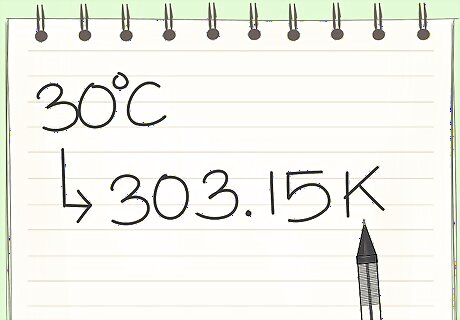
Replace the °C with a simple K. Do not put a degree sign in, as it would be incorrect. Once you've made your calculation, simply add a K and call it a day. 30 + 273.15 = {\displaystyle 30+273.15=} 30+273.15= 303.15 K {\displaystyle 303.15K} 303.15K 0 + 273.15 = {\displaystyle 0+273.15=} 0+273.15= 273.15 K {\displaystyle 273.15K} 273.15K 100 + 273.15 = {\displaystyle 100+273.15=} 100+273.15= 373.15 K {\displaystyle 373.15K} 373.15K
Understanding Kelvin
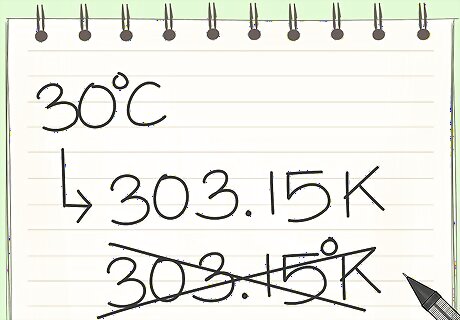
Never use the word "degree" when talking about Kelvin. The correct way to say "292 K" is simply "two-hundred and ninety-two Kelvin." Kelvin is known as the "absolute temperature," and does not use degrees. Each unit is actually called "a Kelvin." It doesn't get two degrees hotter, but two Kelvins hotter.
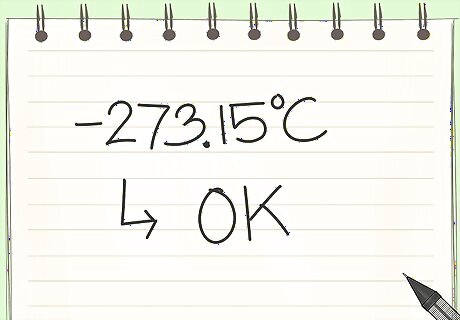
Know that 0 Kelvin is the theoretical point where an ideal gas has no volume. Absolute zero, or 0 K, is the point where molecules theoretically stop moving. This is the "perfect" cold. While absolute zero is not possible to create, scientists have come close. The point of the Kelvin scale is to make this sort of calculation -- absolute zero -- easier to work with.
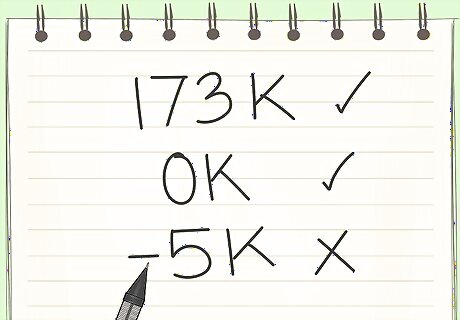
Use Kelvin for scientific research. Because 0 K is the lowest temperature possible in the universe, Kelvin has no negative numbers. This makes it much, much easier to work with mathematically. You can better compare temperatures, find differences or averages, and note relationships when you don't have to work with positive and negative temperatures. Kelvin is also used to measure color temperature -- thus the 3000K, 6000K, etc. settings on cameras and professional lighting kits and bulbs.
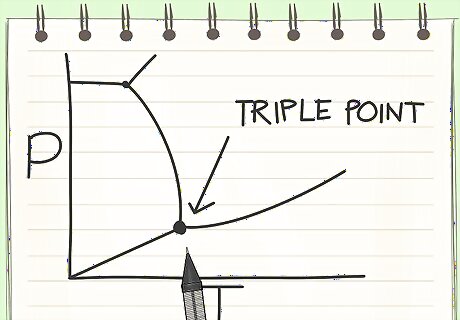
Dive into the technical definitions of Kelvin for advanced classes. The Kelvin is defined as 1 273.15 {\displaystyle {\frac {1}{273.15}}} {\frac {1}{273.15}} the thermodynamic temperature of the triple point of water. Accordingly, the number 273.15 is frequently used to convert temperatures to Kelvin. Don't worry if this explanation doesn't make much sense -- it is mostly for high-level chemists and physicists.
Convert Fahrenheit to Kelvin (Optional)
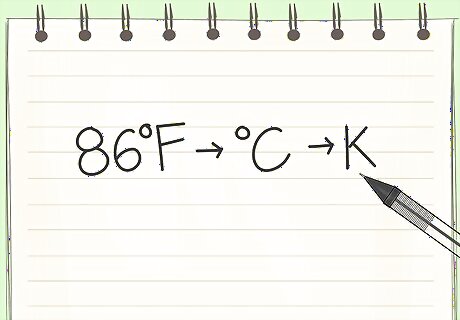
Convert Fahrenheit to Celsius before converting to Kelvin. You cannot go directly from Fahrenheit to Kelvin without converting to Celsius first. The Celsius to Kelvin conversion is much easier than the Fahrenheit to Celsius conversion. You will almost definitely need a calculator for this. 86°F
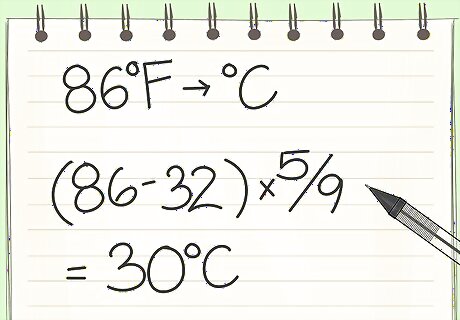
Subtract 32 from your Fahrenheit reading. For example, 86 minus 32 is 54. As an interesting aside, know that this is because the freezing point of Celsius is 32 less than Fahrenheit. 86 − 32 = 54 {\displaystyle 86-32=54} 86-32=54 Multiply the number you just calculated by 5 9 {\displaystyle {\frac {5}{9}}} {\frac {5}{9}}, or 0.5555.. For example, 54 times 0.5555 is 30. In some formulas, you may also be asked to divide by 1.8, which is the same calculation as multiplying by 0.5555. This finishes the conversion to Celsius. 54 ∗ .5555 = 30 {\displaystyle 54*.5555=30} 54*.5555=30 54 ∗ 5 9 = 30 {\displaystyle 54*{\frac {5}{9}}=30} 54*{\frac {5}{9}}=30

Add 273.15 to finish converting to Kelvin. Once you've subtracted 32 and multiplied by 5 9 {\displaystyle {\frac {5}{9}}} {\frac {5}{9}}, you're in Celsius. Now just add 273.15 to get to Kelvin and call it a day. 30 + 273.15 = {\displaystyle 30+273.15=} 30+273.15= 303.15 K {\displaystyle 303.15K} 303.15K


















Comments
0 comment